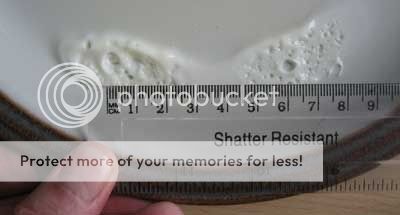In this post I will be explaining you on how to do this using a microwave oven which is used in your kitchen for preparing food in day to day life.
Materials used in this experiment
Materials used in this experiment
- A microwave oven
- Pan cake or anything that could be taken into the microwave oven fully ( Do not use combustive materials such as silver foil )
- A ruler
- A calculator
Before actually getting started, let me share some of the facts you should know in order for a better understanding. As you know, 'light' is a member of the electromagnetic spectrum, it will take some similar properties with the other electromagnetic radiations. For example, microwaves is also a member of electromagnetic series. In fact, all the radiations in the electromagnetic series, have the same speed. This means in other words, if you calculate the speed of any radiation in the series, you have calculated the speed of every radiation in the series as all the radiations in the electromagnetic series are equal in magnitude. In my experiment I calculated the speed of microwave radiation and thereby I make it equal to the speed of light.
The procedure
- Prepare the pan cake (or what ever you use in this experiment)
- Remove the rotating plate found in the microwave oven as we do not need it being rotating and it will also affect our experiment as well.
- Place the pan cake inside the microwave oven.
- Switch on the microwave oven for not more than 1 minute.
- Now observe the pan cake and you will find several points where is is affected by the microwaves.
- Measure the distance between those points. ( This distance is equal to half of the wavelength ) Therefore to calculate the wavelength, multiply this distance by 2. In my experiment I read the length as 6 cm = 0.06m. Therefore, wavelength = 0.12m
- Now check the back of the microwave oven to figure out the frequency of the microwave oven ( this is the frequency of the wave inside the microwave oven ). Usually, most of the microwave ovens have a frequency of 2450 MHz. in order to convert this into Hz, you will have to multiply 2450 by 10 ^ 6 which is equal to 2450,000,000 Hz.
- Use the following equation to calculate the speed of the microwave.
- The above equation is derived from the below equation
ex :- Speed = 2450,000,000 Hz x 0.122 m = 298,900,000 m/s
Explanation
- The distance between the points give us the half of the wavelength.
- The lower part of the wave is the region where, the wave hits on the surface of the pan cake, where it makes an effect on the pan cake as several points.
- Multiplying this distance by two gives us the magnitude or the value of the wavelength.
A similar experiment is done in the following web page.
Resources:
To learn more about EM radiations:
To learn more about EM radiations:
- EM spectrum: http://www.purchon.com/physics/electromagnetic.htm
- Experiment of speed of light measurement with the use of chocolate bars: http://www.null-hypothesis.co.uk/science//item/measure_speed_light_microwave_chocolate
- Experiment using marshmallows: http://www.physics.umd.edu/icpe/newsletters/n34/marshmal.htm
- Wavelengths of EM radiations: http://science.hq.nasa.gov/kids/imagers/ems/waves3.html
- More facts on EM spectrum: http://www.krysstal.com/spectrum.html
- Finding the speed of light using egg omelet: http://www.sciencebuddies.org/science-fair-projects/project_ideas/Phys_p056.shtml
- Experiment by political calculations: http://politicalcalculations.blogspot.com/2010/04/measuring-speed-of-light-in-your.html
- Similarities and differences in EM radiations: http://wiki.answers.com/Q/Electromagnetic_spectrum_similarities_and_differences







Hah, ingenious.
ReplyDeleteI love these kind of posts the most, home experiments were always interesting to me.
good experiment! has got me thinking and wondering what would the results be if the experiment was repeated with the pancake under water..
ReplyDeleteVery smart experiment, very scientific-minded, good luck Tuan :)
ReplyDeleteThankyou for this wondrous post, I am happy I watched this site on yippee. microwave radiation
ReplyDelete